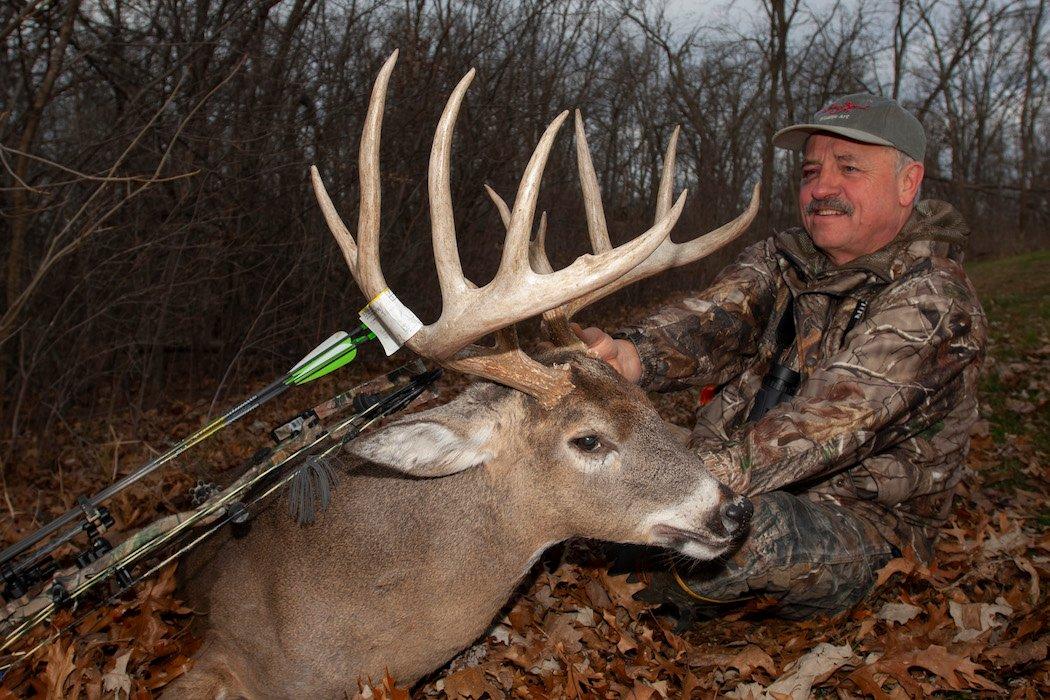(Almost) everything you need to know to get it done
Deer with big antlers are no harder to kill than other bucks the same age. They are just very rare because the genetics have to be present to produce such a deer in the first place. Then he has to get to prime age of at least four years old, if not older. The biggest bucks I've killed were all between five and seven.
Understand the Odds
Look at it by the numbers. If a buck having the potential to become a booner is one in 10 (in good areas), and one of those 10 bucks reaches age five (again, in good areas), that means the best-case scenario is this: one in every 100 bucks will reach this status. In areas with poorer genetics, poorer nutrition and higher hunting pressure, that number could easily become one in 500, one in 1,000, or worse.
So, the real key to shooting a buck that grosses over 170 is having one to hunt in the first place. If this is your goal and you aren't hunting where at least a few of them live, you really need to find better spots.
Hunt Where They Are
This is not a generic statement. It actually takes a lot of effort to be sure you're hunting where these deer live. It is not so simple as saying, I'll hunt Kansas this season. You could have 2,000 acres to hunt in Kansas and still not be close to a gross B&C buck. Trying to shoot a net booner is even harder.
Since just hunting in a great state is not enough, you need some kind of inside information (like trail camera photos) that confirms the presence of a buck this big. How you go about arranging that is an entirely separate article.
I know guys who hunt with outfitters but require proof of the size of the deer. I know guys who lease multiple farms with the hope at least one of them has a giant buck on it each year. I also know guys who have standing deals with local hunters in various parts of the country to pay them a fee if they find a booner for the hunter to pursue. Or, possibly you can enlarge your net and knock on a few doors to increase the odds.
Trying to shoot one on purpose, with any kind of regularity, requires non-traditional methods. Not necessarily non-traditional hunting methods, but non-traditional methods to find the bucks to hunt in the first place.
However, there are parts of the country where these bucks are 1 in 100, and if you live in one of these areas (like I do), there is a decent chance you'll have a gross booner to hunt every few years.
Hunt Him Specifically, But Carefully
It makes no sense to hunt another buck or area once you know where the target buck is living. You are either hunting him or you are not hunting at all - unless you're shooting does or have more than one buck tag. You must focus on that one deer and hunt him exclusively as often as the situation allows. Every minute spent carefully hunting in a big buck's range brings you one minute closer to tagging him (or at least encountering him).
You can't hunt him so hard that you spook him or educate him. That is the art of hunting any mature buck, not just those with big antlers. If you show me a guy who shoots mature bucks consistently, I will show you a guy who can shoot a booner if one is in the area.
That said, monitor the buck as well as possible with trail cam photos. Start to learn not only his core but also various parts of his range. He may be more vulnerable in one area than another due to terrain or cover.
Learning as much as you can about the buck using trail cameras is the real key to making good decisions about when and where to push. Photos can even reveal his most likely bedding areas. The direction he approaches your cameras from in the evening will tell you this. When he starts to show daylight activity, move in to hunt.
You also have to be very careful about all other aspects of the hunt, including: entry and exit routes, stand placement relative to travel routes and wind. Simple stuff like paying attention and staying hidden in the stand are crucial, too.
Every buck is unique. Every situation is different. It's what makes this so fascinating. No two are the same. Every buck represents a new puzzle that you get to solve, and that puzzle may take multiple seasons before you learn enough to put the pieces together. That just makes it more rewarding.
Now, go put one in the books.
Don't Miss: A New Place to Consume Midwest Whitetail Content
Check out more stories, videos and educational how-to's from Bill Winke and Midwest Whitetail.










